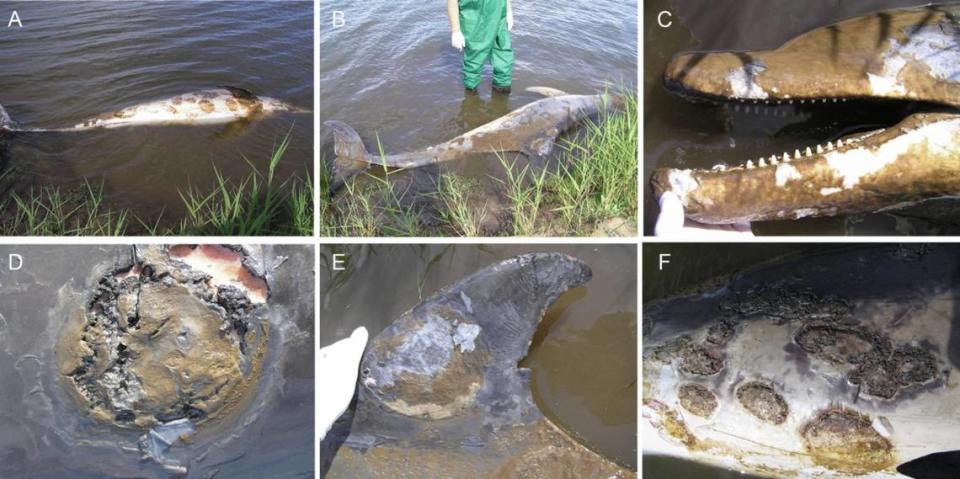A painful skin disease is killing dolphins worldwide — scientists just found out why
Ever since Hurricane Katrina devastated the Gulf Coast in 2005 with its Category 5 strength, dolphins that called those coastal waters home have been dying from a painful skin disease.
Scientists have devoted years to studying the deceased mammals blanketed with crusty, pus-filled lesions in the hopes of finding the cause of the condition.
Now, 15 years later, researchers at The Marine Mammal Center in California — the world’s largest marine mammal hospital — together with colleagues in Australia have discovered what’s causing the devastating disease in coastal dolphins worldwide: climate change.
Storms like Hurricane Katrina are becoming more frequent and severe as global temperatures rise. These storms pour large volumes of rain over saltwater oceans, slowly turning them into freshwater reservoirs.
Because of the decreased salinity, dolphins develop patchy, raised lesions over their bodies that sometimes cover more than 70% of their skin, according to a study published Dec. 15 in the journal Scientific Reports.
The condition, called ulcerative dermatitis or “freshwater skin disease,” sucks dolphins dry of their vital nutrients, paving the way for organ failure and rapid death.
Although climate change cannot be fixed overnight, the “groundbreaking” discovery can provide scientists with information they need to diagnose and treat affected dolphins.
“With a record hurricane season in the Gulf of Mexico this year and more intense storm systems worldwide due to climate change, we can absolutely expect to see more of these devastating outbreaks killing dolphins,” study co-author Dr. Pádraig Duignan, chief pathologist at The Marine Mammal Center, said in a news release.
“The findings in this paper will allow better mitigation of the factors that lead disease outbreaks for coastal dolphin communities that are already under threat from habitat loss and degradation,” Duignan said.
The deadly skin disease was first discovered in about 40 bottlenose dolphins in the New Orleans area following Hurricane Katrina, the researchers said. The condition looks like circular patches of swollen lesions where fungus, bacteria or algal species sometimes set up camp, leaving a yellow, green or orange discoloration on the dolphins’ skin.

Since then, outbreaks of the disease have occurred in waters off Mississippi, Alabama, Florida, Texas and Australia, where the “rare and threatened” Burrunan dolphin lives.
“The breaks in the skin cause the dolphin to lose vital ions and proteins from their bodies … so when all of that is oozing out of them, the fresh water then rushes in which causes swellings and ulcers,” study lead researcher Nahiid Stephens, a veterinary pathology lecturer at Murdoch University in Australia, told ABC Gippsland.
Stephens said the lesions are on par with third-degree burns in humans.
“It kills them because it causes electrolyte disruptions in [the dolphins’] blood stream and they ultimately end up with organ failure,” he told the outlet.
All of the regions where dolphins have been affected have one trend in common: drastic drops in ocean salinity thanks to more frequent and severe storms brought on by global warming.
The 2020 Atlantic hurricane season produced a record-breaking 30 named storms, surpassing the 28 from 2005, according to the National Oceanic and Atmospheric Administration. Twelve of them made landfall in the continental U.S., ranging from from Category 1 to Category 4, marking the second-highest number of hurricanes on record.
The change in salinity in oceans can last for months, the researchers said, especially after stronger storms, which are predicted to occur more frequently as temperatures warm.
This also means that scientists should expect more outbreaks of the deadly skin disease among dolphin populations, of which the long-term outlook is “poor,” the team said.

